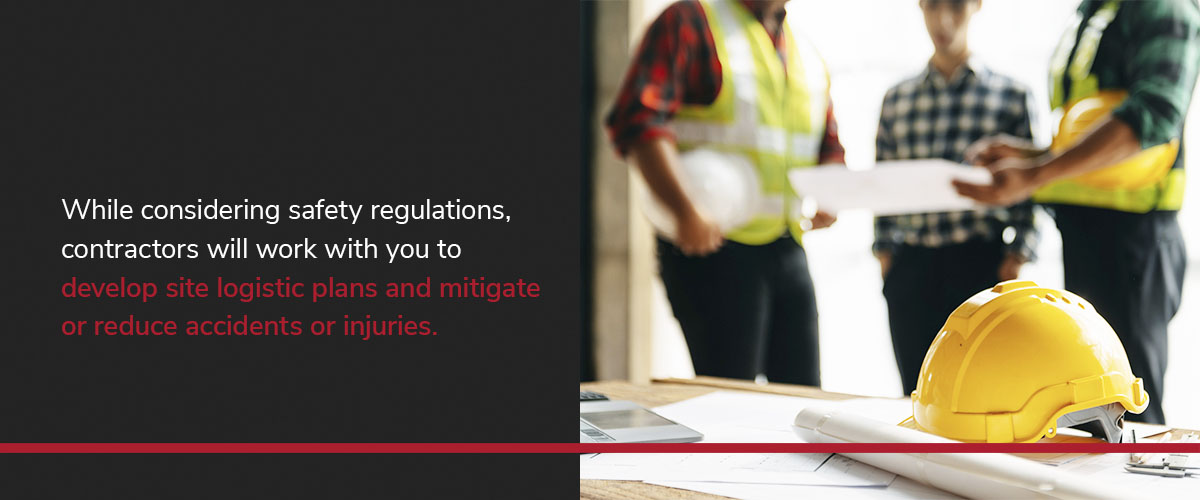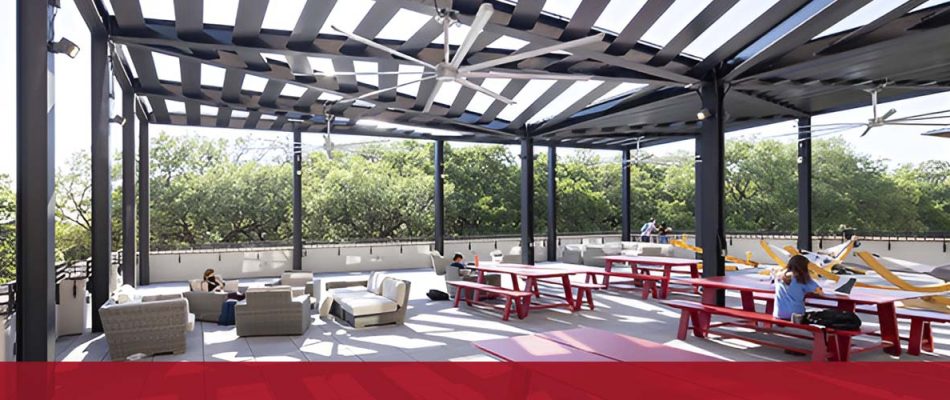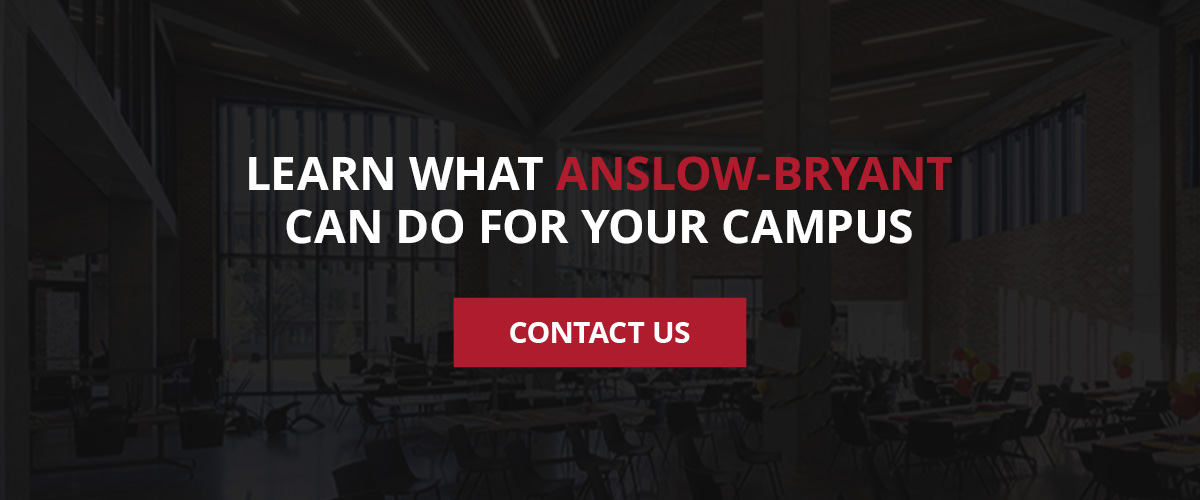Safety and Planning When Working on an Occupied Campus
Community safety is a top concern when working on an active campus. A construction safety plan begins before contractors even step foot on-site, from considering site logistics to implementing proper signage and barricades. Here’s an overview of the strategies and standards workers uphold throughout a project timeline to keep all occupants on a college campus safe.
Understanding the Context of an Occupied College Campus
Working on an occupied campus presents many challenges not always typical of a construction site. With their myriad workers, machines and building materials, job sites can present hazards that can be amplified when building in a crowded area. Potential hazards include:
- Falling objects, tools or materials.
- Exposure to dust, debris and other pollutants.
- Moving objects and vehicles.
- Noise.
These items are sometimes referred to as “attractive nuisances.” With students walking from class to class, packed classrooms, and outdoor events and sports to grapple with, projects must be conducted in a way that does not disrupt regular campus activities or put the community at risk.
Importance of Construction Safety on an Occupied College Campus
Whether your campus has 500 or 15,000 students, you’ll want to work closely with contractors to develop a job site safety plan. Adequate safety measures can prevent accidents and injuries and ensure a safer environment for students and staff.
Construction Safety Regulations and Compliance
Occupational Safety and Health Administration (OSHA) regulations are designed to protect the public on construction sites. Key regulations include:
- Controlled access zones (CAZ): OSHA requires construction sites to establish CAZs to keep the public out of hazardous areas.
- Barricades and warning signs: Construction sites must have barricades and warning signs that alert the public of potential dangers. Contractors will display visible signs and markers on your campus that comply with OSHA specifications.
- Falling object protection: OSHA requires construction sites to use specific measures to protect the public from falling objects like tools and debris, such as platforms, scaffolding or overhead protection.
- Pedestrian walkways: Construction sites must also provide designated pedestrian walkways separate from vehicular traffic. Contractors will include walkways on your campus that are appropriately marked to prevent accidents and help students get around safely. Traffic control measures are also implemented to manage vehicles and public movement around sites.
Complying with these regulations can reduce the risk of accidents and promote health and safety on and around campus construction sites.
Safety Culture During Construction
Maintaining clear communication with contractors can help you foster a safety culture on your campus. Discussions between contractors and occupants, workers, building owners or community members might include:
- Goals, type and length of construction activities.
- Health and safety aspects of the project.
- Site access requirements and limitations.
Having an explanation of the project safety requirements and zero-tolerance policies can help keep students and staff safe. In these discussions, you can map out a job site safety plan to prevent accidents, such as putting up lockable fence gates, danger signs, or barriers to keep nonworkers out of work areas.
Implementing Construction Safety Measures on an Occupied Campus
Many safety strategies can be implemented before and during construction projects to keep the public safe. Here’s how contractors will work with you to prevent hazards on your campus:
Risk Assessment Planning
Planning for risks long before the first day on a site can help keep the community safe. While considering safety regulations, contractors will work with you to develop site logistic plans and mitigate or reduce accidents or injuries. For example, during the pre-construction process, you might discuss:

- The scope of work.
- The project schedule.
- Safety requirements for that project.
A logistic plan might show delivery routes, traffic patterns, construction barriers, safe and unobstructed areas, and clear access for emergency vehicles. Contractors will also coordinate schedules with you, such as the timing of truck routes and deliveries to not disrupt class hours or campus events.
Emergency Preparedness During Construction
Safety pre-planning also includes emergency preparedness. Construction site emergencies can change depending on the location and come in various forms, such as weather, fires, power outages or exposure to hazardous materials. An emergency preparedness plan should include:
- Names and responsibilities of contractors responsible for emergency action.
- Procedures for reporting a fire or another emergency, such as contact numbers.
- Procedures for emergency evacuation, including exit routes.
An effective emergency plan can help keep workers and occupants safe during construction, whether dealing with a natural or human-made accident. Emergency plans might include notifying authorities about any fire-related work that will occur, such as welding. It’s also worth noting when a project impacts a campus’s communication system or sprinkler system or requires the temporary heating of spaces — this is important to prevent pipes from freezing.
Communication and Safety Training
Consistent communication between campus leaders and construction companies is vital. This can be achieved through various communication channels, including in-person meetings or email updates. Regular communication ensures that safety information is relayed between both parties while reducing errors, misunderstandings or needing to redo tasks.
It’s also vital for campus leaders and contractors to undergo safety training to promote a safe working environment and meet regulations. For example, campus leaders should know how to identify potential hazards in construction sites and campus buildings. They should also learn how to report safety concerns or accidents and understand emergency response protocols in the event of an emergency.
At the same time, construction workers are trained on relevant safety regulations related to their work environment and the safe operation of construction equipment, helping reduce the risk of accidents or injuries.
Monitoring and Evaluation of Safety Measures
It’s important that contractors and campus leaders continuously strive to enhance safety practices and address potential risks. This might be done through site inspections, incident reporting and feedback from building staff and contractors. Based on these evaluations, you might adjust safety strategies or training programs.
Contractors will also stay updated on best practices, regulatory changes and tech advances in safety equipment to ensure construction safety plans remain relevant and effective.
Learn What Anslow-Bryant Can Do for Your Campus
Construction safety and planning are critical on occupied campuses. As a campus leader, you’ll want to collaborate with contractors dedicated to implementing safety measures and planning strategies. At Anslow-Bryant, safety is our top priority. We have a zero-tolerance policy founded on the same principles on which OSHA regulations are based.
Our approach to safety includes training, task planning, layout, coordination and removing unsafe actions. You can also request cloud services for real-time field information, providing updates on your project’s progress and action items. When you work with us, you can rest easy knowing that we implement proper safety measures to keep your community safe.
To learn what we can do for you, contact us today.






